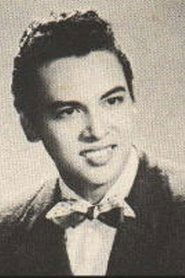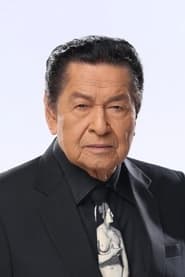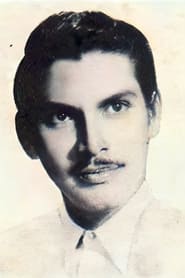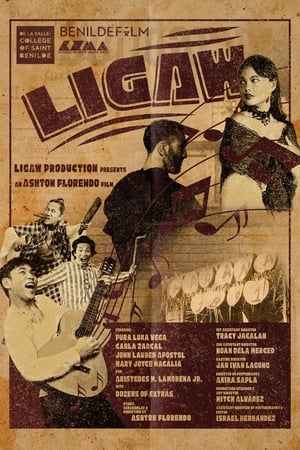
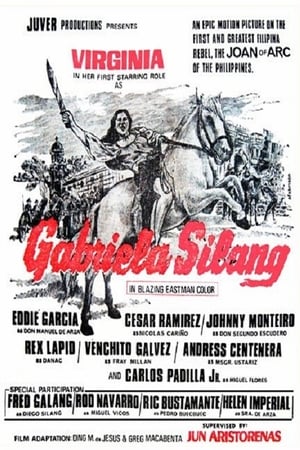
Gabriela Silang(1971)
Gabriela Silang a Filipino revolutionary leader best known as the first female leader of a Filipino movement for independence from Spain
Movie: Gabriela Silang
Top 10 Billed Cast
Gabriela Silang
Danac
Fray Millan
Msgr. Ustariz
Diego Silang
Miguel Vicos

Gabriela Silang
HomePage
Overview
Gabriela Silang a Filipino revolutionary leader best known as the first female leader of a Filipino movement for independence from Spain
Release Date
1971-11-24
Average
0
Rating:
0.0 startsTagline
Genres
Languages:
Keywords
Similar Movies
 5.8
5.8Appointment in Tokyo(en)
Produced by the Army Pictorial Service, Signal Corps, with the cooperation of the Army Air Forces and the United States Navy, and released by Warner Bros. for the War Activities Committee shortly after the surrender of Japan. Follow General Douglas MacArthur and his men from their exile from the Philippines in early 1942, through the signing of the instrument of surrender on the USS Missouri on September 1, 1945. Preserved by the Academy Film Archive in 2013.
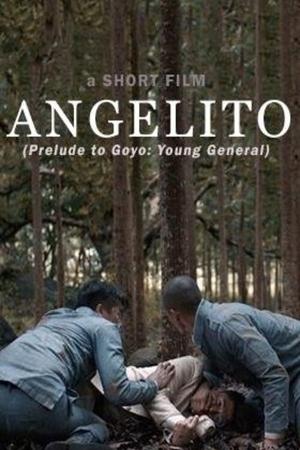 5.3
5.3Angelito(tl)
A short film about Antonio Luna’s aides-de-camp Jose and Manuel Bernal during the aftermath of Luna’s assassination.
Tropical Gothic(es)
Philippines, 1570, the early years of the Spanish colonial regime. Marta, a Native Priestess, convinces her Spanish master that she is possessed by the spirit of his dead bride, in order to manipulate him into returning the farmland that the Spaniards seized from the native community.
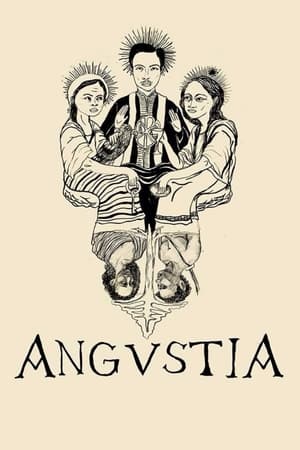 0.0
0.0Angustia(en)
Don Victorino Hernandez, a creole secular priest from Manila, has two passions: botany and the total conversion of the native population particularly the Agtas, who in spite of the rigorous undertakings of Spanish colonialism continue to live in the hinterlands, giving them a notorious reputation in the minds of the lowlanders as well as the colonizers.
Concerto(en)
Concerto is about how, in the last part of World War II, a special piano concert is held in the forest outside Davao City, in Mindanao. In these boondocks, a displaced Filipino family, lead by Military Commander Ricardo and his wife Julia, become acquainted with a group of Japanese officers, similarly camped nearby. Their son Joselito, a Japanese speaker, becomes the conduit with the neighboring Japanese. Their daughters Niña, an aspiring concert pianist and the musically gifted, Maria, who is able to play by ear, are alternately repulsed and intrigued by the officers. Family values are questioned as the family treads the thin line between enmity and friendship with the occupying Japanese. Based on true stories from the director's own family history, Concerto celebrates a family whose reverence for life, expressed through their love of music and friendship, can survive even war, and shows how beauty and compassion does grow in even the harshest of conditions. - Written by anonymous
 4.0
4.0Pedro Calungsod: Batang Martir(en)
Pedro Calungsod, a young Filipino man, leaves his Visayan native roots to join the Spanish Jesuit priest Fr. Diego de San Vitores in his mission to the Marianas Islands (Guam) in 1668. The San Diego Mission arrives in the Marianas where the young Pedro, a trained catechist and mission assistant, begins work for Fr. Diego de San Vitores in baptizing the Chamorro natives, preaching the holy gospel and spreading the good news of salvation through the Christian faith amidst paganism, doubt and disbelief. Despite the longing for his father and the threats to their lives, even at the peril of death, Pedro and Fr. Diego continued their missionary work. They roamed the dangerous islands and baptized many more natives and continued to enlighten them about Christianity.
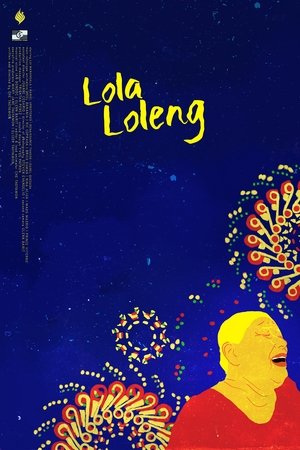 0.0
0.0Grandma Loleng(tl)
A young woman goes back to her province in the countryside where she gets to once again meet her Grandmother Loleng - a distant relative and a senile parol (Christmas lantern) artisan. Together, they will explore Grandma Loleng’s landscape of memories, only to unearth her innermost secrets and wartime experiences. It is about memory and forgetting, both in the context of the personal and of the national consciousness.
Women Of Malolos(en)
A musical docudrama about the brave and outstanding Women of Malolos to whom Jose Rizal addressed his famous letter in Feb 22, 1898.
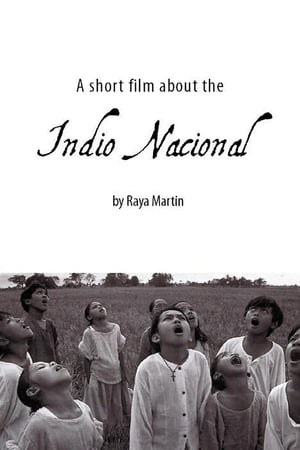 6.7
6.7A Short Film About the Indio Nacional(tl)
What follows is a black-and-white silent film set in the 1890s during the brewing Filipino revolution against Spanish colonialism. A series of tragic and comic sequences tells the Three Ages of an Indio (“common man”) as he progresses from boy bell ringer in a village church to teenage revolutionary to adult theater actor rehearsing a popular Spanish play.
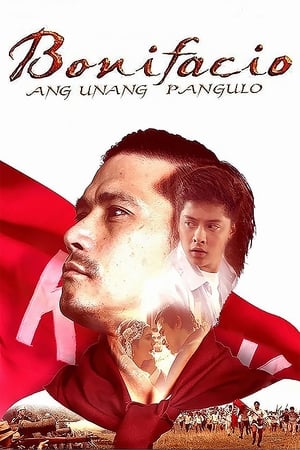 8.2
8.2Bonifacio: Ang Unang Pangulo(tl)
The true story of Andres Bonifacio, a man who rose as a leader in the fight against the Spanish oppressors, and would gain the enmity of even those fighting for the same cause.
 0.0
0.0Historiographika Errata(tl)
A disillusioned and suicidal Rizal, a cross-dressing Bonifacio gripped with paranoia, an ex-Katipunero who joins the US army to save his own neck, and a widow whose sex-for-food errands lead her to become the first ever Makapili. These are the historical mosaics that will form a singular hypothesis as to why we are like this as a people and up to now still reeling from our damaged culture.
 6.5
6.5Baler(en)
In 1898, a band of Spanish soldiers heroically defended Baler against Filipino forces for 337 long and grueling days. The battle, now referred to as the Siege of Baler, is the setting of a forbidden love between a Mestizo soldier and a Filipina lass who lived at the end of the 19th century.
 0.0
0.0Diego Silang(tl)
This movie captures the core and colorful saga of the famous Ilocano hero Diego Silang.
 0.0
0.0Andres Bonifacio Ang Supremo(tl)
A story about the Philippine revolutionary Andrés Bonifacio, the founder and Supremo of the Katipunan.
 1.0
1.0War Baby(en)
Meet Duewand Collier Jr.-Male, 68 years old, American Citizen, a child conceived in the backdrop of the Philippines-American Mutual Defense Treaty, born and raised with Catholic guilt. He has made peace with his past and now tells his story-a story of love.
 0.0
0.0Heroes(tl)
Independent filmmaker Raymond Red's first crossover to full-length feature is a highly visual chronicle of the rise and fall of revolutionary hero Andres Bonifacio. Noted for its heavy stylistics and painstaking attention to filmic detail, the biopic also tackles the momentous events surrounding the Philippine struggle against Spanish colonialism. The historical epic is a most fitting cinematic memorial to the centenary of Philippine independence.
 6.0
6.0Rizal in Dapitan(tl)
Dr. Jose Rizal was exiled in Dapitan from 1892-1896. These were his last four years. Dapitan served as his prison cell. He always compared it to “a beautiful cage” where he is imprisoned. This was the longest imprisonment Rizal ever had. He became so lost by those times, but still he did not lose his mind. Even there, he continued studying and discovering things. He continued his conversation with his friends, scientists and doctors outside the country.
